While the prewar car scene is dominated by Ford products, there are still a few examples of other makes out there. Many are from companies or brands that no longer exist, so they get far less attention or aftermarket support than their Blue Oval contemporaries. On the positive side, these forgotten classics can often be had for a lower price and offer a whole trunk full of exclusivity. Take for example this 1931 Pontiac sedan. Fresh out of what appears to be long-term storage, this Pontiac offers a solid body and an interior that is one trip from an upholstery shop away from making this a very presentable car. Would you like to drive a distinctive, seldom-seen Depression-era sedan to your next local car show? The best part is that it can be had at a bargain price. Interested?
One of the most fascinating aspects of this sedan was that it represents a rarely discussed chapter of General Motors’ history. We all know how a GM customer of the time was expected to stay loyal to the company, but they were also expected to move to a higher tier brand as they moved up in life. Quite simply put, GM wanted you to start with a Chevrolet and work your way up to a Cadillac before the darkness overtook you. By the late twenties, GM took that to a whole different level by adding sub-tiers to the system. At one time, the maker offered Chevrolets, Oaklands, Oldsmobiles, Buicks, Cadillacs, and the slightly less expensive partner makes of Pontiac (for Oakland), Viking (for Oldsmobile), Marquette (for Buick), and LaSalle (for Cadillac).
Of all those partner makes, only Pontiac survived. When the Great Depression hit, Oakland and Pontiac were slated to be discontinued. Then, unexpectedly, the economy improved to a point where it was decided to keep Pontiac and drop Oakland due to the former’s better sales numbers. The more expensive Oakland brand’s last year was 1931, leaving Pontiac with an inline-six powered car dubbed the “Fine 6 Series 401.” Seven body style choices were available to customers who opted for a Pontiac instead of the more expensive Oakland. Believe it or not, Oakland offered a V-8 engine during this period. When Oakland expired in 1931, Pontiac inherited this innovative and seldom-remembered powerplant for their 1932 lineup.
The car you see here is assumed to be from the Fine 6 Series 401 line, but the ad does not mention the specific model. This well-built sedan is equipped with an inline-six-cylinder engine and offers many clues that it was fixed up and driven a few decades ago. At one time, it must have been quite a handsome car. The black paint, while dulled over the years, is still intact and the chrome shows no signs of chipping. The exterior might even be presentable with some detailing.
The interior, however, will need some work. The new owner may have some success in cleaning up the mohair seat cloth to the point it would be presentable for a while. The door panels, side panels, and the complete lack of a headliner pose a challenge. A frugal but talented owner could probably fashion a very presentable interior for this car from material found at a big-box craft store. Maybe it wouldn’t be correct for the car. However, it would be nice to get a car like this back on the road. On the bright side, we can see a clock in the rearview mirror, a crank to open the windshield for ventilation, and someone slapped on a turn signal kit at one time. The mechanicals on these cars are stout, and the price is very right for someone wanting to dip their toe in the ownership of a prewar car.
This 1931 Pontiac four-door sedan for sale in Lucerne Valley, California on Barn Finds Classifieds is a chance for someone to pick up a solid prewar sedan at a stunningly low sum. With a $3,900 asking price, a lot of room is left in the budget for such niceties as an interior and the usual mechanical maintenance to get this car back on the road. Would you be interested in adopting a rarely-seen car like this Pontiac?
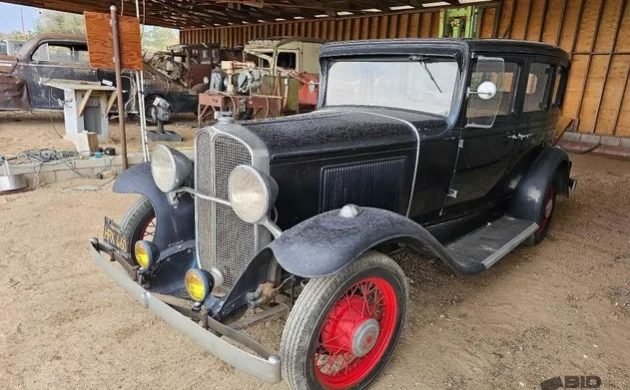

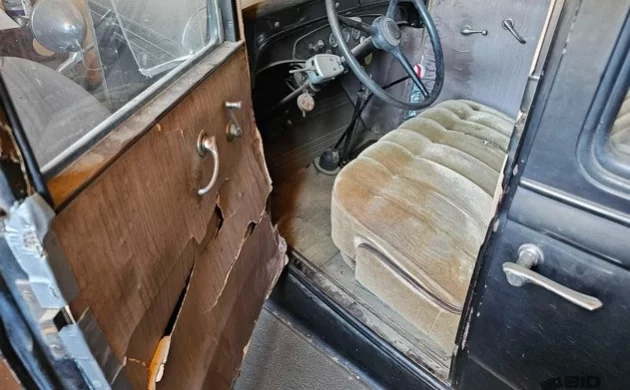
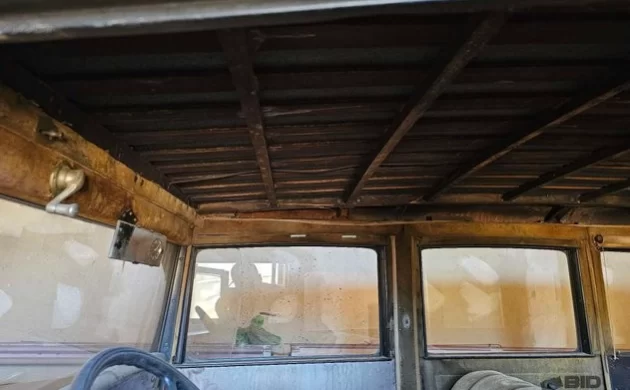
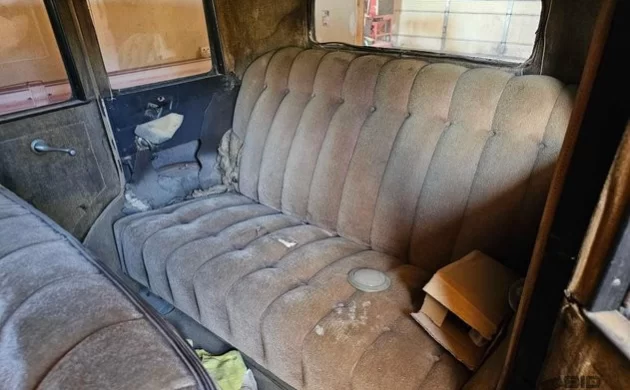
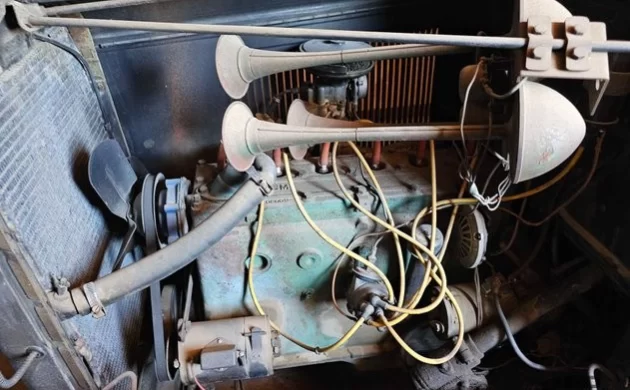


I had a 31 Oakland 301 4 door. The body looked absolutely identical to this Pontiac. The V-8 must have been designed by the junior engineering staff. The heads had an almost right angle down the center. Try tightening a head gasket on that without a leak. It did have a monster radiator, 25 quart as I remember. It was faster than most of its contemporaries, especially from a dead stop but prone to overheating. Fun car, maroon with a black top half. Any one seen it out there?
This cool and it would be fun to get it back on the road , the auction its at even has a car trailer so you can drag it home. Seller has chosen to auction all this stuff scrolling through the pictures of what else is available multiple other cars and trucks and at least $100,000 in what I would consider scrap metal good luck to the family selling this stuff.
I loved these cars, and riding in them as a youngster. There was something about vehicles from the early 1930s. A neighbour had one of these Pontiacs, but theirs had curtains in the rear windows with tassels on them to pull them down. Otherwise, just like this one.
Looking at the photos I cannot figure out where the brake drums hide.
It almost looks like the wheel spokes go into a hub that houses the bearings and doubles as a drum.
Can anyone clarify where the drums are and how it goes together?
I read the 1931 Pontiac had rear brakes only and mechanical. We can’t really see the back, but that could produce some tense moments for some. I think 1935 Pontiacs had juice brakes, anyone?
Thanks
Is this car still avaliable?